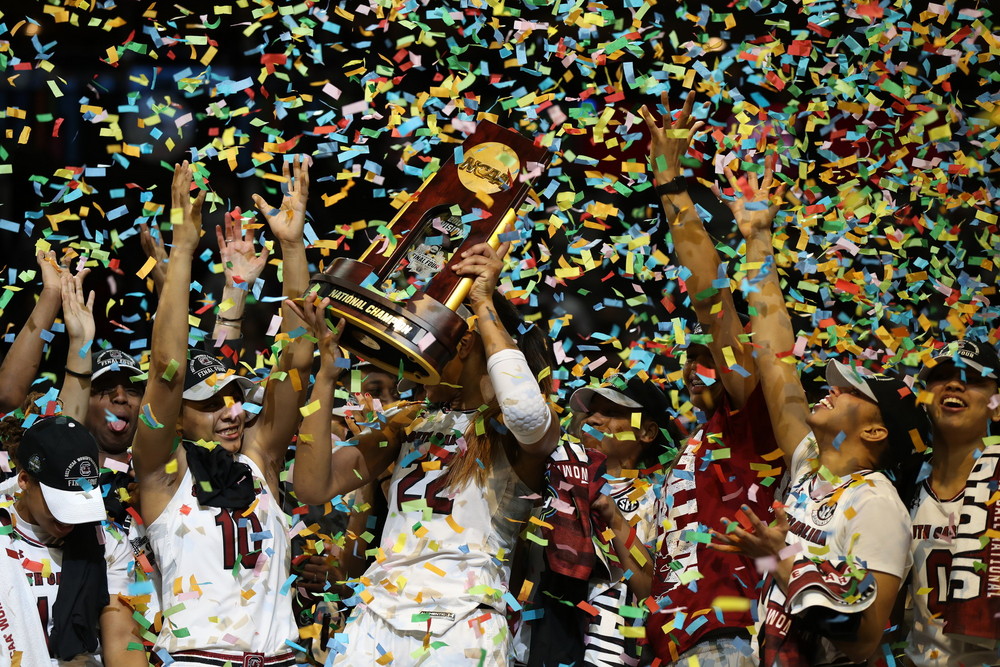
Photo Courtesy of ESPN Images
While the cheers from the March Madness tournaments have begun to fade, the momentum for women’s sports continues to resonate loudly. ESPN’s MegaCast NCAA Women’s Tournament efforts led to unprecedented results with a remarkable 18.9 million viewers across ESPN platforms, setting a new standard for women’s sports viewership. The viewership grew with each round, providing an astounding 121% YOY growth and a 37% YOY increase in the regular season viewership numbers.
Beyond the star power of Caitlin Clark, whose presence garnered significant attention, there was a remarkable 76% viewership increase outside of Iowa games, demonstrating the broad appeal of women’s college basketball. Advertisers seized the opportunity presented by the Women’s Basketball Championship, with nearly 1,000 locking in for the championship game.
This surge in media coverage and advertiser interest has the potential to catalyze growth across women’s sports leagues. Sponsors and advertisers who witnessed the impact and popularity of women’s college basketball may now be more inclined to support other women’s sports leagues and events, leading to increased advertising opportunities.
So, how did they achieve this success? We turned to two influential figures at ESPN, VP of Production Sara Gaiero and VP of ESPN Research Flora Kelly, to uncover the strategies that propelled their success and any revelations that defined this year’s NCAA tournament coverage.

Flora Kelly: The numbers we saw this season were tremendous. Each round, we saw double or triple-digit viewership growth and delivered record audiences, beginning with the second round and continuing through the National Championship game.
Additionally, the record for the most-watched women’s college basketball game was set and broken three times in the span of six days, being capped off with 18.9 million viewers tuning into the National Championship between South Carolina and Iowa. The surrounding programming also benefited from the heightened interest, as the NCAA Women’s Championship Special Presented by Capital One brought in 2.9 million viewers on ABC as a lead-in to the Championship game, up substantially from last season.
We saw an incredible amount of star power and storylines this season, which is the perfect recipe for strong viewership. Of course, Caitlin Clark and her impact has been well-documented, but we saw increased interest across the entire tournament, as non-Iowa games were still up 76% from the 2023 NCAA Women’s Tournament.

Flora Kelly: Heading into the NCAA Women’s Tournament, the momentum around the sport could be felt and we expected to see a significant increase in viewership and interest. However, the level of viewership exceeded our loftiest expectations and has yet to slow down, as evidenced by the record audience for the WNBA Draft. Undeniably, there is a movement around women’s sports and, specifically, women’s basketball. We are in the early stages of examining these results and potentially what that might mean moving forward.
Were there any new strategies implemented in coverage, or any new features introduced, to enhance viewer engagement and satisfaction?
Sara Gaiero: Our strategy for the season, specifically going into the Women’s NCAA Championship, was really to focus on our three pillars – prioritizing exposure of the sport, highlighting the stars and investing in the game. This wasn’t a new strategy to any of us, but we wanted to really hone in on these factors ahead of the 2023-24 season. We saw these pillars pay off – through viewership, social and digital support and additional MegaCast offerings.
Our studio coverage was not new to the 2024 NCAA Women’s Championship, but the group that we had – Elle Duncan, Andraya Carter, Chiney Ogwumike, Carolyn Peck and guest analyst Aliyah Boston – sparked such positive reactions throughout the span of the tournament. We are always thoughtful about how to create great chemistry, but that group was so incredibly invested, and it was even better than we could have anticipated.
Looking ahead, what innovations or enhancements might viewers have to look forward to in regards to coverage of the women’s tournament in the future?
Sara Gaiero: Our group is always looking for new ways to innovate, especially coming off a year as successful as this one. But while we look to innovate, we also still want to stick to our core ideology of those three pillars. We are going to continue to showcase the superstars, get fans excited about the game of women’s basketball and continue to bridge college and the WNBA.

Photos Courtesy of ESPN Images


